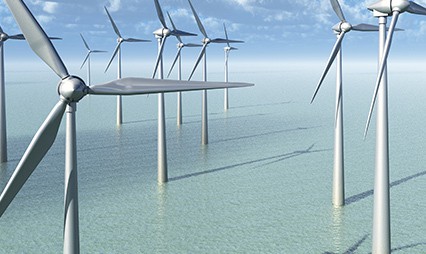The power behind turbines
The UK is a windy place but its sometimes inhospitable conditions deliver a sustainable source of energy that could power the UK several times over. A modern 2.5MW wind turbine in the UK will typically generate 6.5 million units of electricity every year, which is enough to make 230 million cups of tea as comfort against the climate.
To maximise the potential of this powerful natural resource, there is currently an on-going debate among engineers about the best options for controlling wind turbines – via a gearbox, direct drive or a hybrid of the two. Whatever the outcome, over 80% of installed turbines use conventional gearboxes and this technology is likely to play an important role in the future. The challenge for designers is to develop components that can handle ever larger turbines, with steadily growing capacity, which is increasing the strain on gearbox components.
The increasing demands on turbines only underline the point that an essential part of any preventative maintenance programme for wind farms is the application of vibration monitoring technology. The rotating parts of wind turbine generators need to be continuously monitored to warn of bearing and component wear and since wind turbines are frequently installed in remote locations with high costs incurred when there are any failures, it is vital to be able to determine potential problems before they occur so remedial action can be taken. By successfully implementing an effective vibration monitoring strategy, engineers will prolong equipment life and minimise maintenance and downtime costs.
Hansford Sensors has supplied many thousands of accelerometers worldwide to wind turbine operators. For example, low frequency accelerometers have proved to be an excellent solution. The accelerometers, dependent on the customer requirements, have been either 100mV/g or the higher sensitivity specification 250 or 500mV/g components. These are for monitoring the low speed aspects of the generator, for example, output shafts. Most of the projects have involved supplying a local junction box (HS-JE), which accommodates the accelerometer cabling at the top of the wind turbine. Dependant on the exact configuration, multi-core is connected and fed back down to ground level for termination into the online monitoring system. Online programmes enable operators to monitor turbine conditions in real time using any computer or handheld device with internet access. Using this information, the condition monitoring system can then provide an accurate performance overview that will identify faults and predict failures before they occur. This then allows operators to develop an effective predictive maintenance strategy, which can ultimately allow considerable savings in time, resources and money to be realised.
The power behind wind turbines comes not just from the elemental force of the wind itself but also the vibration monitoring system that maximises the benefit of that power.
